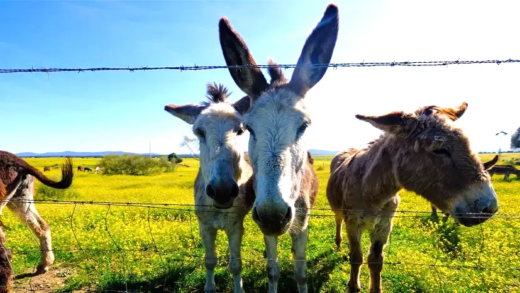Ostriches do not bury their heads in the sand. Instead, they exhibit remarkable behaviors like fleeing and using camouflage when threatened. Their adaptability, social structures, and unique physical traits provide valuable lessons for survival and teamwork. Fun facts highlight their impressive size and speed, debunking myths and celebrating their true nature.
The Head-Burying Myth: What’s the Story?
Ostrich behavior often sparks curiosity, especially the widespread myth that these large birds bury their heads in the sand. This misconception originates from a combination of misunderstanding their natural habits and a bit of folklore. In reality, ostriches do not engage in this behavior. The idea likely comes from their tendency to lower their heads when they sense danger, making them appear as if they are hiding. When an ostrich feels threatened, it often lies down flat on the ground, which can create the illusion that its head is buried.
1. **Origin of the Myth**: Ancient cultures, particularly the Romans, observed ostriches and misinterpreted their behavior. They believed that ostriches would bury their heads in the sand to escape predators, leading to the myth’s persistence.
2. **Why It’s Incorrect**: In truth, ostriches have evolved to use their speed and size as their primary defense mechanisms. When faced with danger, they often run away, reaching speeds of up to 45 miles per hour!
Ostrich Behavior: How Do They Really React to Danger?
Understanding ostrich behavior in the face of danger reveals a lot about their adaptability. These birds are not only fast but also incredibly smart. When threatened, an ostrich’s first instinct is to flee. They can quickly assess their surroundings and decide on the best escape route.
1. **Flight Response**: Ostriches can run long distances at impressive speeds, often zigzagging to evade predators. This instinctual behavior is a survival tactic that has helped them thrive in the wild.
2. **Camouflage Tactics**: If fleeing is not an option, ostriches may choose to lie flat against the ground, blending in with the environment. This behavior is a strategic move to avoid detection rather than hiding their heads.
Common Misunderstandings: What Ostriches Actually Do
It’s essential to clarify what ostriches actually do in the wild, as many common misunderstandings stem from misinterpretations of their behavior. While the myth of head-burying persists, the truth is far more fascinating.
1. **Vigilance and Awareness**: Ostriches are incredibly vigilant birds. They have excellent eyesight, which allows them to spot potential threats from far away. They often stand tall and scan their surroundings for danger.
2. **Social Behavior**: In groups, ostriches communicate through body language and vocalizations, alerting each other to potential threats. Their social structure plays a vital role in their survival.
The Role of Their Heads and Necks: More Than Just a Pretty Face
Ostrich behavior reveals fascinating uses of their heads and necks, which are essential for survival. These birds have long necks that aid in various ways, especially in communication and foraging. Their heads are not just there to look pretty; they play a crucial role in their daily lives.
1. **Communication**: Ostriches use their heads to express feelings and intentions. For example, a raised head signals alertness, while a lowered head can indicate calmness or submission. Their body language is rich and complex, making it essential for social interactions within groups.
2. **Foraging**: When searching for food, ostriches use their heads to peck at the ground and sift through vegetation. This behavior shows their adaptability in finding food sources in various environments. Their keen eyesight allows them to spot food from a distance.
3. **Defense Mechanism**: While they don’t bury their heads, ostriches do use their necks to scan for predators. By stretching their necks high, they can see over tall grasses and bushes, ensuring they stay aware of their surroundings.
Real-Life Ostrich Behavior: Examples from the Wild
Observing ostrich behavior in their natural habitat provides insight into their fascinating lives. These large birds exhibit a range of behaviors that debunk the myths surrounding them. In the wild, ostriches display unique adaptations that help them thrive.
1. **Group Dynamics**: Ostriches often travel in groups, which enhances their chances of survival. They rely on each other for vigilance, taking turns to watch for danger while others feed. This teamwork is a vital aspect of their social structure.
2. **Running and Dodging**: When faced with threats, ostriches showcase their impressive speed. They can sprint away from predators, zigzagging to evade capture. This behavior is not only a survival tactic but also a testament to their physical capabilities.
3. **Nest Protection**: During nesting season, ostriches demonstrate protective behavior. They take turns incubating their eggs and will fiercely defend their nests from intruders, showcasing their parental instincts.
Other Animals with Similar Misconceptions
Just like ostriches, several other animals face misconceptions about their behavior. These misunderstandings can lead to unfair stereotypes and myths that don’t reflect the reality of their lives.
1. **Pigs**: Often thought to be dirty animals that wallow in mud for no reason, pigs actually do this to regulate their body temperature and protect their skin from sunburn and parasites.
2. **Goldfish**: Many believe goldfish have a three-second memory span. In reality, they can remember information for months and can even be trained to respond to signals.
3. **Cows**: Cows are often seen as simple creatures, but they have strong social bonds and can even experience emotions like joy and grief.
Learning from Ostriches: Lessons We Can Apply
Ostrich behavior offers valuable lessons on adaptability and survival in challenging environments. Observing how these birds react to threats can teach us important strategies for managing our own challenges. Here are key takeaways:
- Stay Alert: Like ostriches, being vigilant and aware of our surroundings can help us avoid potential dangers. Keeping our senses sharp enables us to make informed decisions.
- Teamwork: Ostriches thrive in groups, relying on one another for protection and information. This highlights the importance of collaboration and support in our lives.
- Adaptability: Ostriches demonstrate remarkable adaptability. They can switch between fleeing and using camouflage based on the situation. We too can benefit from being flexible in our approaches to problems.
By incorporating these strategies into our daily lives, we can navigate challenges more effectively, much like the resilient ostrich.
Fun Facts About Ostriches: Did You Know?
Ostriches are fascinating creatures with plenty of interesting facts that can surprise even the most avid bird watchers. Here are some fun tidbits:
- Largest Bird: Ostriches are the largest living birds, with some individuals reaching up to 9 feet tall!
- Fast Runners: They can run at speeds of up to 45 miles per hour, making them the fastest-running birds on land.
- Unique Eggs: Ostrich eggs are the largest of any living land animal, weighing around 3 pounds and being equivalent to about 24 chicken eggs.
- Long Lifespan: In the wild, ostriches can live up to 40 years, while those in captivity may live even longer.
- Strong Legs: Their legs are not just for running; ostriches can kick with enough force to defend themselves against predators like lions.
These fun facts not only highlight the unique attributes of ostriches but also serve as great conversation starters!
Conclusion: Debunking Myths and Embracing the Truth
The myth of ostriches burying their heads in the sand is just that—a myth. In reality, ostrich behavior showcases their incredible adaptability and survival strategies. They respond to danger with speed and awareness rather than hiding. By understanding the truth about these fascinating birds, we can appreciate their unique adaptations and learn valuable lessons about vigilance, teamwork, and flexibility in our own lives. Debunking such myths helps foster a deeper respect for wildlife and encourages us to look beyond misconceptions. Embracing the truth about ostrich behavior allows us to celebrate their resilience and remarkable capabilities.





Comments are closed.